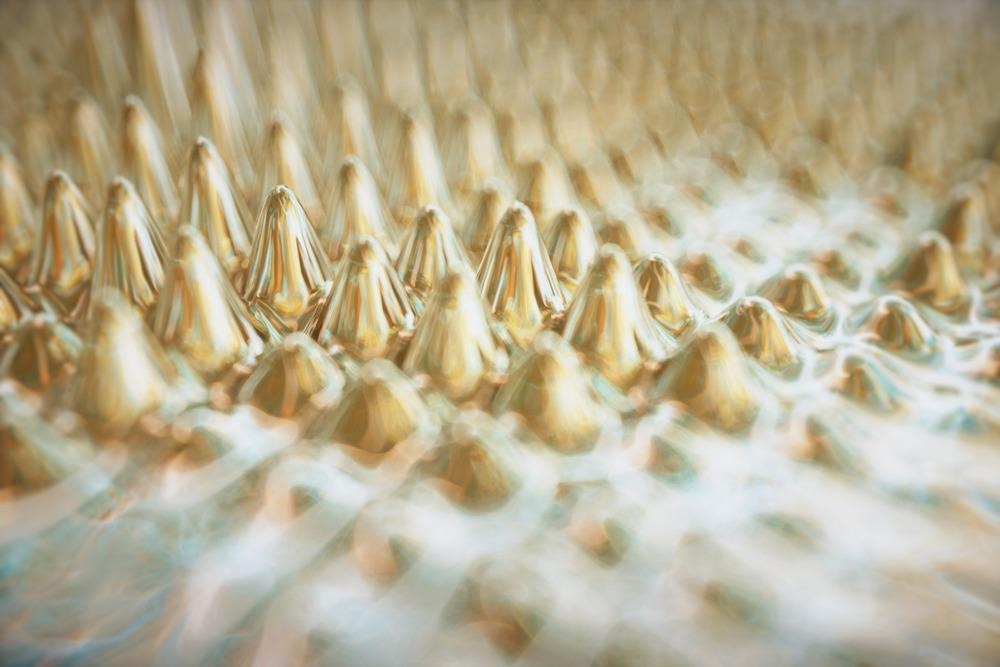Nanomechanics focuses on the basic mechanical features of nanoscale physical systems. Solid-state physics, quantum mechanics, statistics, classical mechanics, and materials science all come together in nanomechanics.

Nanomechanics focuses on physical systems study and usage through fundamental mechanical characteristics at the nanoscale, such as elastic, kinetic, and thermal.
Nanomechanics in Different Fields
Biological species, including proteins, cells, and tissues, can now be detected, explored and manipulated thanks to advances in nanomechanics, opening the door to greater understanding and better healthcare solutions.
The mechanics and kinetics of biological species have been studied using nanomechanical characterization techniques, including atomic force microscopy, nanoindentation, nanotribology, optical tweezers, and other hybrid approaches.
The study of cell and tissue mechanics has yielded important knowledge regarding the mechanical properties of the host body. Using this data, biomimetic materials and architectures for tissue engineering and artificial implants have been developed.
Nanomechanical characterization techniques and their prospective applications in healthcare research have been studied intensely in recent years. The use of nanomechanical cantilevers to detect cancer and myocardial infarction without the need for labels has been addressed in detail.
In regenerative medicine, nanomechanics plays an important role in the selection and design of biocompatible scaffolds for tissue regeneration.
Nanomechanics is a subfield of nanotechnology that focuses on the mechanical characteristics of constructed nanostructures and nanosystems instead of the theoretical aspects of nanotechnology.
A few established topics are in nanomechanics, nanomaterials, nanotribology, and nanoelectromechanical systems.
The Nanomechanics of Individual Proteins
Motility, differentiation, and muscular contraction are some functions regulated by mechanical forces. Individual constitutive proteins must be able to stretch and repeatedly recoil over an extended period to respond to dynamic changes in mechanical stress.
Protein folding biochemistry studies done in bulk cannot, however, access the molecular processes driving mechanical unfolding and refolding of proteins because they often cannot apply stresses to individual proteins.
When paired with a custom protein engineering strategy that uses single-molecule nanomechanical monitoring of protein conformational dynamics, this technology has allowed for unparalleled length, time, and force resolutions to be achieved.
An overview of the most frequent analytical procedures used to directly extract data from studies using the primary single-molecule nanomechanical techniques. Highlighting the most intriguing and promising outcomes from nanomechanics thus far is the wide range of enabling applications.
Nanomechanics Usage in Monitoring the Effectiveness of the Drug on Cancer Cells
Nano- and sub-nanometer resolution surface topography imaging is a primary application of atomic force microscopy (AFM).
Based on the collected data, AFM has been proven to be a useful tool for measuring biological tools on nanoscales, such as proteins or live cells. Scanning, transmission, and cryoelectron microscopy have the capacity to detect biophysical parameters of biological materials under physiologically relevant settings.
Atomic force microscopy has this advantage over other high-resolution methods. Up to this point, this method has been widely used to investigate the nanomechanical characteristics of healthy and pathologically changed cells and tissues, and the elastic properties were measured by Young's modulus.
The usage of nanomechanics as the marker in identifying various diseases is receiving more and more attention these days.
Nanomechanical characteristics of live cells may be measured using atomic force microscopy (AFM), a technology with a high spatial resolution. As a result, AFM may be used to monitor changes in the cytoskeleton's rearrangement in live cells.
An abnormality in actin filaments and microtubules can lead to cell death because of their structural and functional abnormalities. This is why anticancer treatment is focused on cytoskeletal components.
Nanomechanics of Shape Memory Alloys
One of the most important classes of metallic functional materials is the shape memory alloys which undergoes a reversible martensitic transformation. Shape memory alloys, developed during the last two decades, have enabled significant advancements in multiple fields like microelectronics, biomedical devices, and energy conversions.
At the nanoscale of the properties and mechanical characteristics of shape memory alloys are becoming increasingly important as the application sizes of these devices shrink.
Shape memory alloy nanomechanics based on NiTi and Cu has recently made significant advances in understanding the deformation processes and different effects of size, and functional fatigue of miniature samples in polycrystalline forms and also in single-crystalline form.
Future Developments of Nanomechanics
Nanomechanics has vast scope in many fields. There are many more fields in which further developments have been occurring using nanomechanics at the nanoscale.
Numerous other fields such as information technology and civil engineering have also found uses for nanotechnology. These include producing nanoscale additives used to enhance oil well cementation and drilling mud to increase extraction rates and the use of nanocatalyst in the petroleum industry.
Continue reading: What is Young's Modulus and How Does it Fit into Nanotechnology?
Further Reading and References
M.Karami, X. (2021). Nanomechanics of shape memory alloys. Materialstoday ADVANCES. https://doi.org/10.1016/j.mtadv.2021.100141
Marc Mora, A. S. (2020). The nanomechanics of individual proteins. Chemical Society Reviews.https://pubs.rsc.org/en/content/articlelanding/2020/cs/d0cs00426j
Pranjal Nautiyal, F. A. (2018). The Role of Nanomechanics in Healthcare. Advanced Healthcare Materials. https://onlinelibrary.wiley.com/doi/10.1002/adhm.201700793
SapnaRaghav, P. K. (2020). Handbook of Nanomaterials for Manufacturing Applications. https://doi.org/10.1016/B978-0-12-821381-0.00019-3
Disclaimer: The views expressed here are those of the author expressed in their private capacity and do not necessarily represent the views of AZoM.com Limited T/A AZoNetwork the owner and operator of this website. This disclaimer forms part of the Terms and conditions of use of this website.